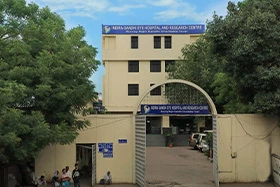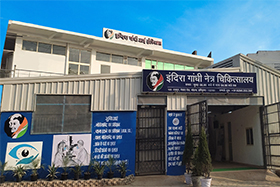- Special charts for Visual Acuity estimation in children
- Cardiff acuity cards
- Teller acuity cards
- Binocular Single Vision estimation devices
- Near & distance stereoacuity charts
- Email: enquiry@indiragandhieyehospital.com
- Call: 01242710271
Specialties
Paediatric Ophthalmology and Strabismus
Indira Gandhi Eye Hospital and Research Centre have well-equipped modern Paediatric Ophthalmology and Strabismus Clinics which offer a wide range of treatments for eye problems in children. Treatment of strabismus (crossed eyes) in adults is also provided. A team of experienced consultants handle treatment of all kinds of eye disorders in children. Till date, we have treated over 150,000 children for eye problems and operated around 16,000 children for eye disorders.

Technical set up
- Baglioni glasses
- Anterior segment digital photography
- VTS 4
- Revital Vision Therapy
- B Scan Ultrasonography
- PENTACAM for Keratoconus detection
- Synaptophore
- Hand held Keratometer
- Contact/non-contact optical biometer
- Centurion Vision System for Cataract surgery and Anterior Vitrectomy
- Zeiss Lumera Operating Microscope
- Avanc CS2 Anesthesia work Station
- Low vision devices
Treatments available
The department offers to the efficient diagnosis and management of a wide range of diseases
- Refractive errors correction with glasses and contact lens
- Convergence weakness
- Congenital Nasolacrimal Duct Obstruction
- Vernal Catarrh(Allergic Conjunctivitis
- Congenital cataracts
- Developmental cataracts
- Traumatic cataracts
- Complicated cataracts
- Subluxated and dislocated crystalline lenses
- Secondary IOL implantation
- Congenital Glaucoma
- Various types of strabismus
- Syndromes like Duane & Browns
- Nerve palsies
- Nystagmus
Procedures and surgeries
The department has a basket of surgeries to offer which include:
- Cataract Surgery with Foldable Intra Ocular Lens Implantation: Cataract surgery in children is performed under General Anesthesia. Cataract extraction and foldable IOL implantation is performed through 2.8 mm incision. In younger children Posterior Continuous Curvilinear Capsulorhexis (PCCC) and Anterior Vitrectomy is performed to prevent posterior capsule opacification.
- Congenital Glaucoma: Examination under Anesthesia is performed to make a diagnosis and combined trabeculotomy and trabeculectomy are performed to control intra-ocular pressure.
- Congenital Nasolacrimal Duct Obstruction: Congenital blockage of Nasolacrimal duct who fails to improve with lacrimal sac massage are manged with probing of Nasolacrimal Duct with or without intubation
- Concomitant Strabismus (Crossed eyes): Concomitant Strabismus are manged by eye muscle surgery.
- Paralytic Strabismus following Nerve palsies: Paralytic Strabismus are manged by eye muscle surgery and transposition of eye muscles.
- Nystagmus: Nystagmus is involuntary rhythmic movements of the eyes and are usually associated with abnormal head posture. They are managed by eye muscle surgeries.
- Eye injuries: Conjunctival tear, corneal tear and traumatic cataract and traumatic glaucoma are managed by different procedure.




